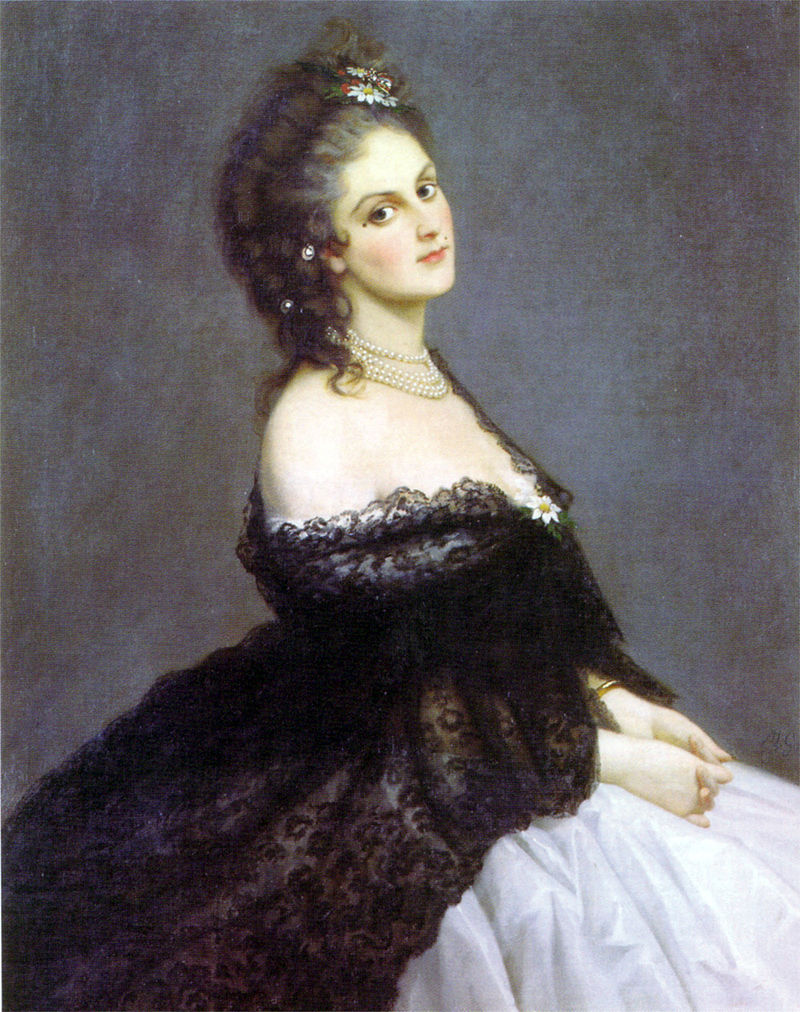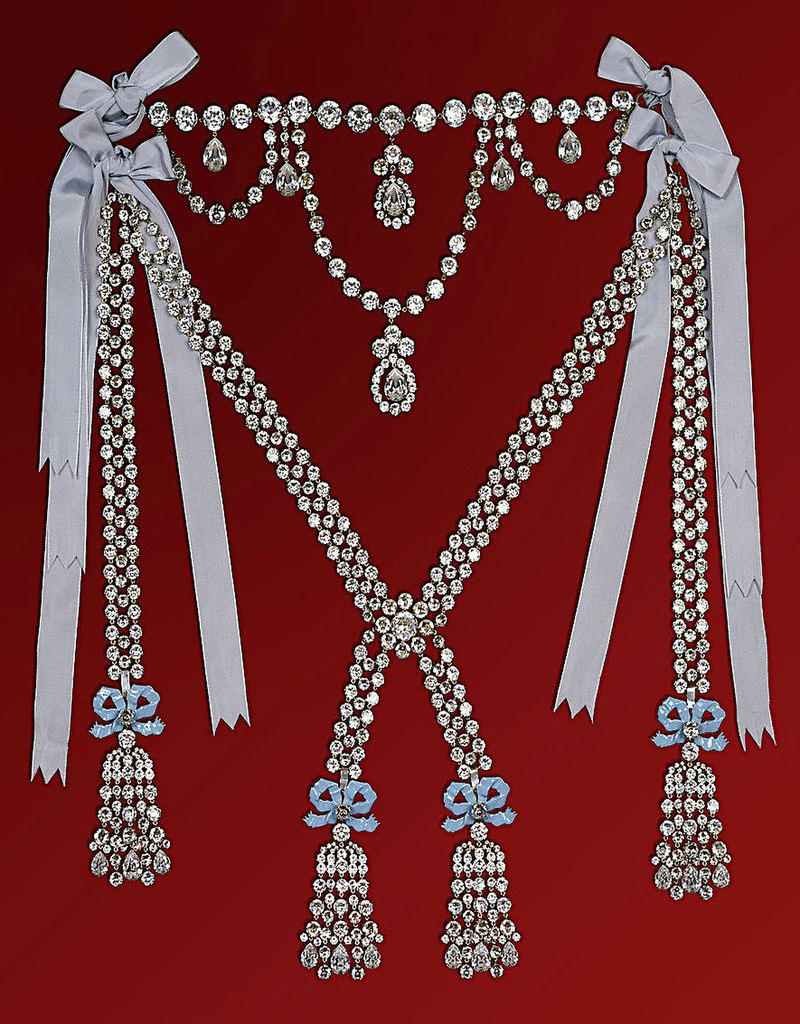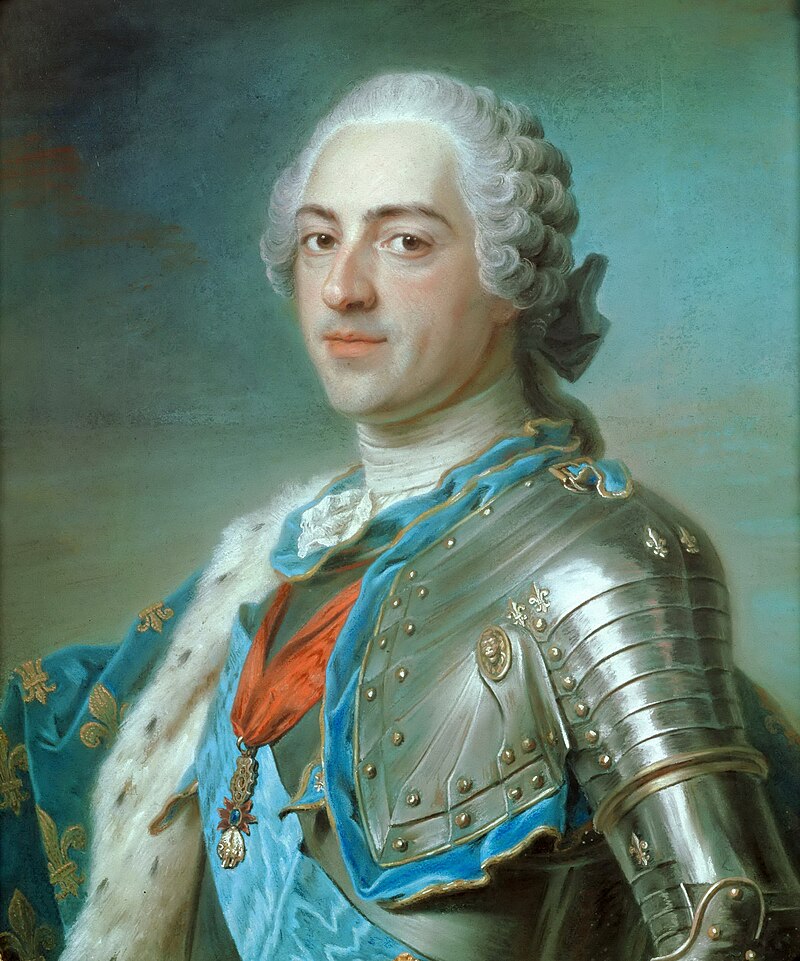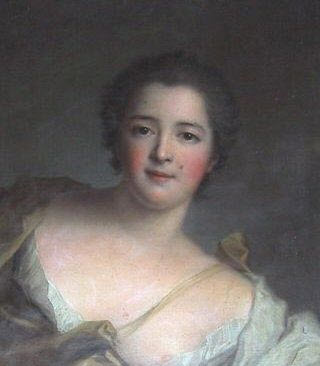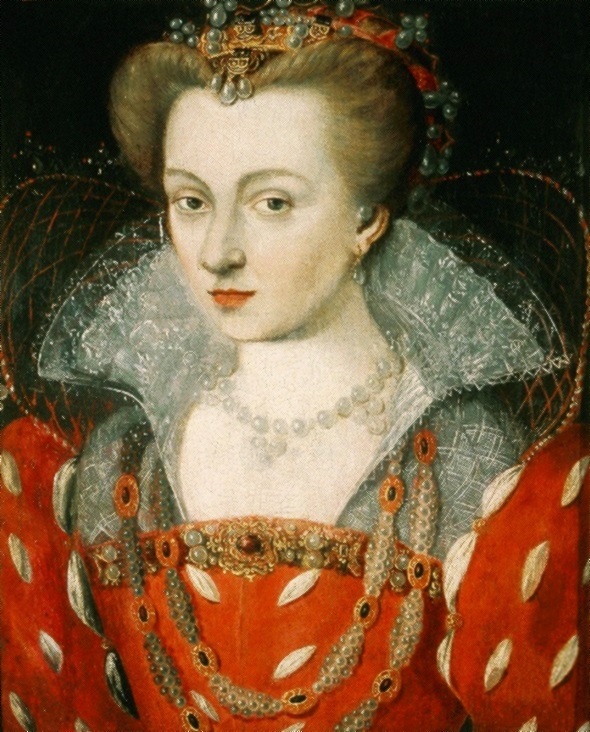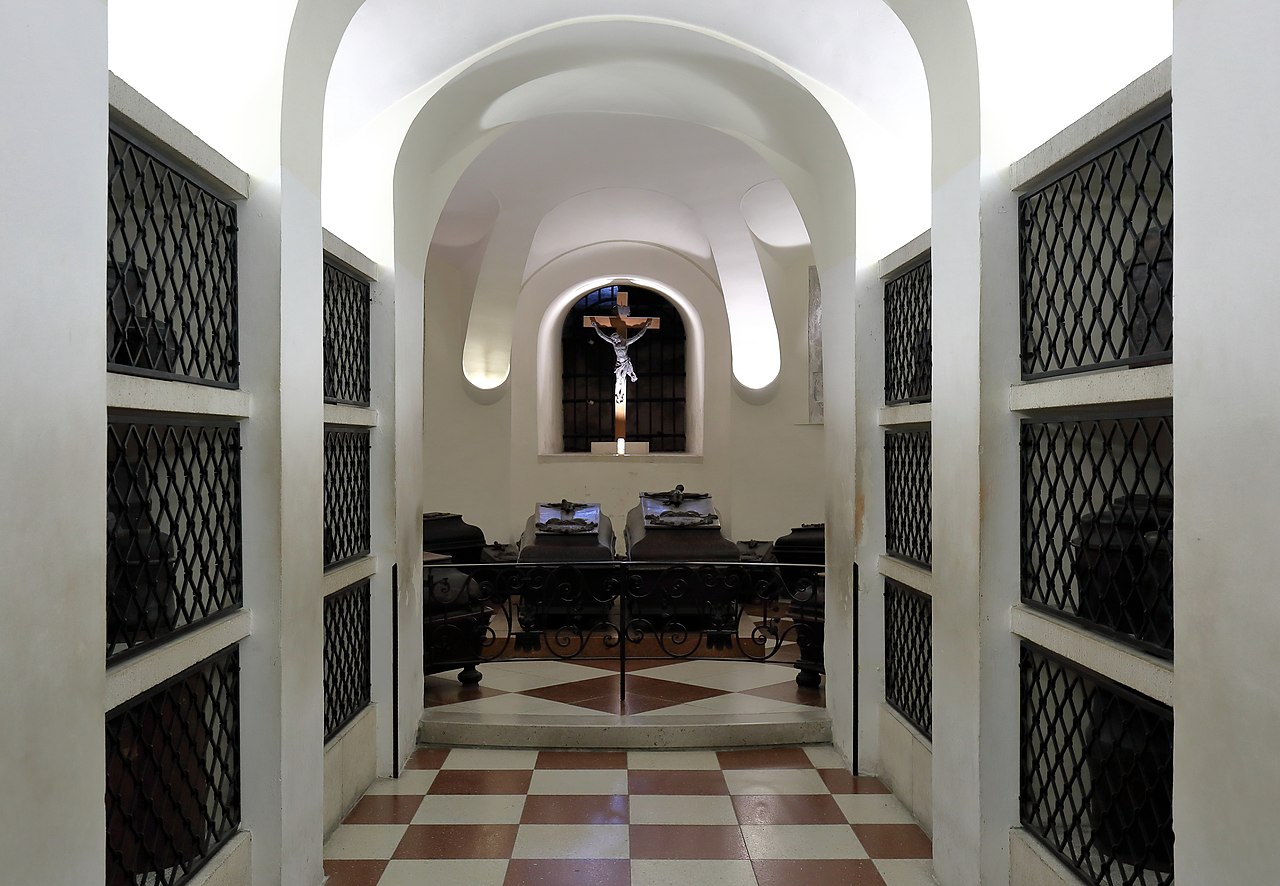by Susan Flantzer © Unofficial Royalty 2020

Elizaveta Romanovna Vorontsova; Credit – Wikipedia
Patronymics
- In Russian, a patronymic is the second name derived from the father’s first name: the suffix -vich means “son of” and the suffixes -eva, -evna, -ova, and -ovna mean “daughter of”.
A mistress of Peter III, Emperor of All Russia, Elizaveta Romanovna Vorontsova was born on August 24, 1739, the second of the three daughters and the second of the five children of Count Roman Illarionovich Vorontsov, who served in the Senate of the Russian Empire and as Governor-General of several provinces, and Marfa Ivanovna Surmina, daughter of a wealthy merchant. Elizaveta’s paternal uncle was Count Mikhail Illarionovich Vorontsov who served as Vice-Chancellor and then Chancellor of the Russian Empire.
Elizaveta had four siblings:
- Maria Romanovna Vorontsova (1737 – 1779), married Count Peter Alexandrovich Buturlin, had two children
- Alexander Romanovich Vorontsov (1741 – 1805), married his second cousin Anna Artemievna Vorontsova, had nine children
- Ekaterina Romanovna Vorontsova (1743 – 1810), married Prince Mikhail Ivanovich Dashkov, had three children, was Princess Dashkova, the closest female friend of Catherine II (the Great), Empress of All Russia
- Semyon Romanovich Vorontsov, Ambassador to the United Kingdom (1744 – 1832), married Ekaterina Alekseevna Senyavina, had two children

Elizaveta’s elder brother Count Alexander Romanovich Vorontsov; Credit – Wikipedia

Elizaveta’s younger brother Count Semyon Romanovich Vorontsov; Credit – Wikipedia
Elizaveta’s father, Count Roman Illarionovich Vorontsov, took part in the 1741 coup that brought Elizabeth Petrovna, the only surviving child of Peter I (the Great), Emperor of All Russia, to the throne as Elizabeth, Empress of All Russia. During the reign of Empress Elizabeth, Vorontsov, who owned estates and factories, became one of the wealthiest people in Russia. In 1746, when Elizaveta’s mother died, her father had no desire to marry again or raise his children, and his children were sent to be raised by relatives. In 1750, Elizaveta and her elder sister Maria were sent to court to serve as maids of honor.
Eleven-year-old Elizaveta was assigned to the court of Grand Duke Peter Feodorovich (the future Peter III, Emperor of All Russia) at his palace Oranienbaum near St. Petersburg, where she was to serve Peter’s wife Grand Duchess Ekaterina (Catherine) Alexeievna. Peter had been born Prince Karl Peter Ulrich of Holstein-Gottorp, the son of Karl Friedrich, reigning Duke of Holstein-Gottorp and Grand Duchess Anna Petrovna of Russia, the elder of the two surviving daughters of Peter I (the Great), Emperor of All Russia. Peter’s mother died at the age of 20, three months after his birth. His father died when Peter was eleven-years-old and he became the reigning Duke of Holstein-Gottorp. Three years later, in 1742, Peter’s life dramatically changed when his unmarried maternal aunt, his mother’s younger sister, Elizabeth, Empress of All Russia, declared him her heir and brought him to St. Petersburg, Russia.

Peter and his wife Catherine; Credit – Wikipedia
Grand Duchess Ekaterina (Catherine) Alexeievna (the future Catherine II (the Great), Empress of All Russia) had been born Princess Sophie Auguste Friederike of Anhalt-Zerbst. It was important to Empress Elizabeth that Grand Duke Peter Feodorovich, the grandson of Peter the Great, marry so that the Romanov dynasty could be continued. Empress Elizabeth picked Sophie to marry her nephew. Peter and Catherine’s marriage was not a happy one but Catherine did have one son, Paul, the future Emperor of All Russia, and one daughter Anna Petrovna, who died in early childhood. Peter took Elizaveta Romanovna Vorontsova as his mistress and Catherine had affairs.
Elizaveta did not have a positive reputation. A member of Peter’s court said of her that she “swore like a soldier, squinted her eyes, smelled bad, and spit while talking.” Peter’s wife Catherine said that Elizaveta was “a very ugly, extremely unscrupulous child with olive skin color, and after suffering smallpox, she became even more ugly because her features were completely disfigured and her whole face was covered not with smallpox, but with scars.” However, Peter developed a fondness for Elizaveta and fondly called her “my Romanova” – a pun on her patronymic derived from her father’s first name Romanovna and Peter’s surname Romanov. Eventually, Peter and Elizaveta became lovers.
On January 3, 1762, Empress Elizabeth had a massive stroke and the doctors agreed she would not recover. Upon her death two days later, her nephew became Peter III, Emperor of All Russia and his wife Catherine became the Empress Consort. As the death of Empress Elizabeth was announced to the court, the room was filled with moans and weeping. Peter was unpopular and few were looking forward to his reign. During the religious ceremonies for the lying-in-state of the deceased empress, Peter “made faces, acted the buffoon and imitated poor old ladies.”

Elizaveta Romanovna Vorontsova; Credit – Wikipedia
Upon his accession, Peter granted his mistress Elizaveta her own maids of honor and assigned her rooms in the Winter Palace next to his rooms. On June 9, 1762, Peter bestowed the Order of Saint Catherine upon Elizaveta. Instituted in 1714 by Peter the Great, it was an honor reserved for female members of the Romanov family. Every Russian Grand Duchess was given the Order of St. Catherine at her christening or upon her marriage into the Romanov family. Princesses of the Imperial Blood were given the order when they reached the age of 18. According to those standards, Elizaveta was not entitled to receive the Order of Saint Catherine.
Contemporary memoirs describe Elizaveta as the “official favorite” of the emperor and “a participant in his entertainment”. According to Andrey Timofeyevich Bolotov, a well-known memoir writer, Peter “spent most of his time with her” and “did not hide before anyone an exorbitant love for her.” Foreign ambassadors in St. Peterburg reported that Peter intended to imprison his wife Catherine in a convent and marry Elizaveta.

Elizaveta’s sister Princess Ekaterina Romanovna Dashkova, a close friend of Empress Catherine; Credit – Wikipedia
During the reign of Empress Elizabeth, Catherine became a close friend of Elizaveta’s sister Princess Ekaterina Romanovna Dashkova who introduced Catherine to several powerful political groups that opposed her husband Peter. Catherine had maintained contact with those groups. As Emperor, Peter did little to gain support. At the time of Elizabeth’s death, Russia was on the verge of defeating Prussia in the Seven Years’ War. Instead, because Friedrich II (the Great), King of Prussia was his idol, Peter withdrew Russian troops from Berlin and marched against the Austrians, Russia’s ally. The last straw for Peter may have been how he treated the Russian army. Peter abolished “the guard within the guard”, a group within the Preobrazhensky Regiment, created by Empress Elizabeth as her personal guard in remembrance for their support in the coup which brought her to the throne. He replaced “the guard within the guard” with his own Holstein guard and often spoke about their superiority over the Russian army.
The devotion of the Preobrazhensky Regiment to Catherine was never in doubt because her lover Grigory Orlov and his four brothers were all members of the Guard. A conspiracy to overthrow Peter was planned and centered around the five Orlov brothers. Peter was arrested at his palace Oranienbaum, and taken by Alexei Orlov to Ropsha, a country estate outside of St. Petersburg, and his wife became Catherine II, Empress of All Russia.

Catherine II on a balcony of the Winter Palace on 28 June 1762, the day of the coup; Credit – Wikipedia
Catherine showed Peter some sympathy by allowing him his bed, his dogs, his violin, and his personal doctor. However, she declined the thing Peter wanted the most – to see Elizaveta. Eight days after the coup, Peter was dead. The true circumstances of Peter’s death at the age of 34 on July 17, 1762, are unclear. It is possible Alexei Orlov murdered Peter. Another story is that Peter had been killed in a drunken brawl with one of his jailers. At the time, the official cause was “an acute attack of colic during one of his frequent bouts with hemorrhoids.” It is doubtful that Catherine played any role in Peter’s death.
Elizaveta had been at Oranienbaum at the time of Peter’s arrest and was also arrested. The original plan had been for Peter to be exiled in his homeland, the Duchy of Holstein-Gottorp, where Peter was still the reigning Duke, and Elizaveta wished to accompany him. Instead, Elizaveta was sent to her father’s Konkovo estate near Moscow. Her maids of honor and her Order of Saint Catherine were taken from her. Empress Catherine ordered Elizaveta’s father to ensure she “lived in silence without giving people any reasons to talk about her.”
Eventually, Empress Catherine arranged a marriage for Elizaveta to Alexander Ivanovich Polyansky (1721 – 1818), a middle-aged army colonel of humble background who was eighteen years older than Elizaveta. In Russian society, the marriage was seen as a mockery of Empress Catherine’s former rival. The wedding took place on September 18, 1765, at the Konkovo estate of Elizaveta’s father near Moscow.
Elizaveta and Alexander had two children:
- Anna Alexandrovna Polyanskaya (1766 – 1845), married Baron Wilhelm d’Hogger, Dutch ambassador in St. Petersburg, had three children
- Alexander Alexandrovich Polyansky (1774 – 1818), married Elizaveta Ivanovna Ribopier, had five children
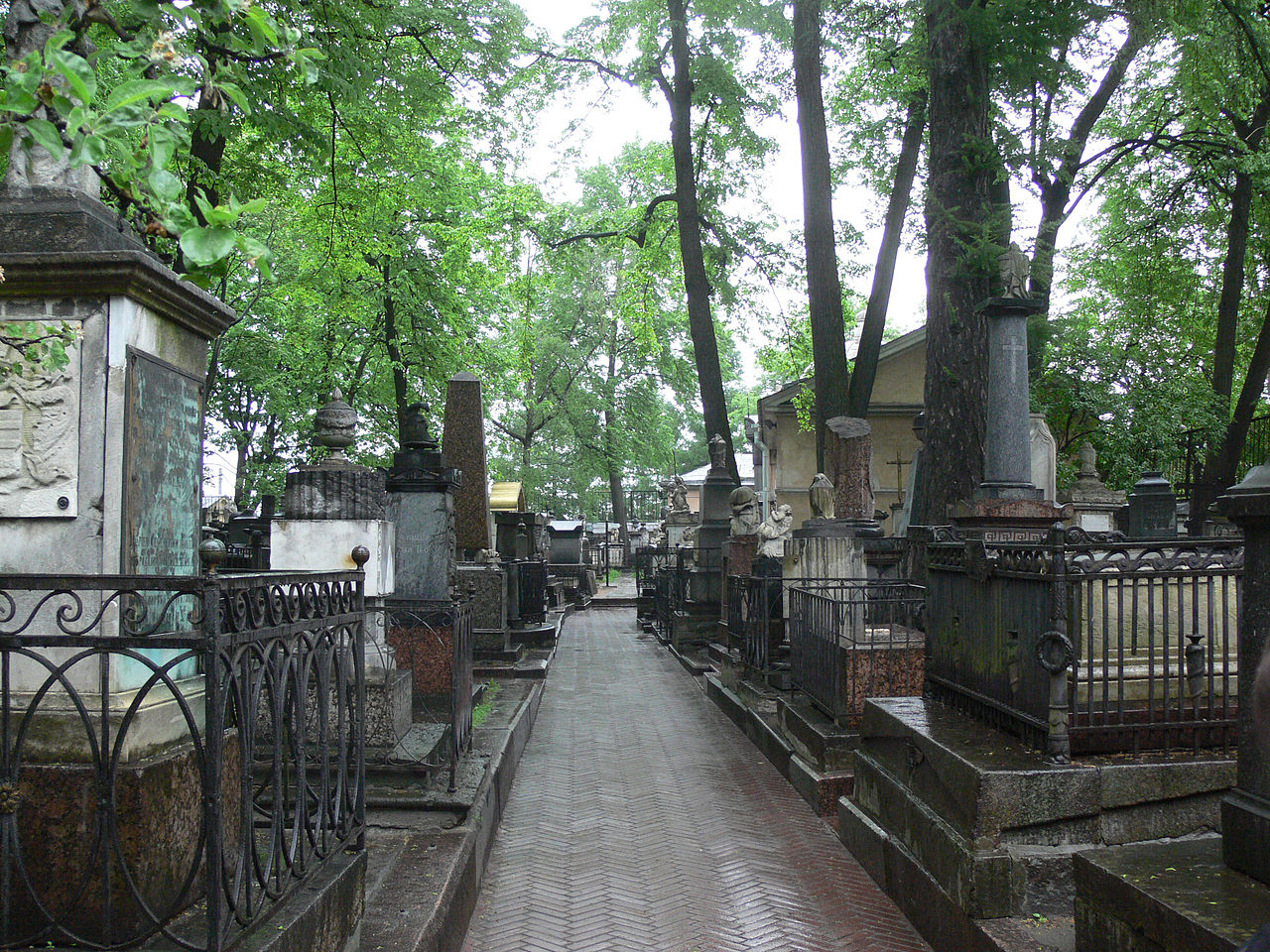
Lazarevskoe Cemetery at the Alexander Nevsky Lavra in St. Petersburg, Russia; Credit – By Christian Bickel (Fingalo) – Own work, CC BY-SA 2.0 de, https://commons.wikimedia.org/w/index.php?curid=10620059
Initially, Elizaveta and Alexander were ordered to live away from St. Petersburg. However, in 1765, they were allowed to return to St. Petersburg, and Alexander received several civil service positions. Elizaveta never again appeared at court but did have contact with Empress Catherine’s close friend Countess Anna Stepanovna Protasova. Elizaveta died on February 2, 1792, at the age of 52. She was buried at the Lazarevskoe Cemetery at the Alexander Nevsky Lavra in St. Petersburg, Russia. Her husband Alexander Ivanovich Polyansky survived her by twenty-six years, dying at the age of 97 on November 28, 1818, shortly after the death of his only son, and was buried with his wife Elizaveta.
This article is the intellectual property of Unofficial Royalty and is NOT TO BE COPIED, EDITED, OR POSTED IN ANY FORM ON ANOTHER WEBSITE under any circumstances. It is permissible to use a link that directs to Unofficial Royalty.
Works Cited
- En.wikipedia.org. (2018). Catherine the Great. [online] Available at: https://en.wikipedia.org/wiki/Catherine_the_Great [Accessed 19 Jan. 2018].
- En.wikipedia.org. 2020. Elizaveta Vorontsova. [online] Available at: <https://en.wikipedia.org/wiki/Elizaveta_Vorontsova> [Accessed 4 June 2020].
- En.wikipedia.org. (2018). Peter III of Russia. [online] Available at: https://en.wikipedia.org/wiki/Peter_III_of_Russia [Accessed 10 Jan. 2018].
- Flantzer, Susan, 2018. Catherine II (The Great), Empress Of All Russia. [online] Unofficial Royalty. Available at: <https://www.unofficialroyalty.com/empress-catherine-ii-the-great-of-russia/> [Accessed 4 June 2020].
- Flantzer, Susan, 2018. Peter III, Emperor Of All Russia. [online] Available at: <https://www.unofficialroyalty.com/emperor-peter-iii-of-russia/> [Accessed 4 June 2020].
- Lincoln, W. Bruce. (1981). The Romanovs: Autocrats of All the Russias. New York, NY.: Doubleday
- Massie, R. (2016). Catherine the Great. London: Head of Zeus.
- Ru.wikipedia.org. 2020. Воронцова, Елизавета Романовна. [online] Available at: <https://ru.wikipedia.org/wiki/%D0%92%D0%BE%D1%80%D0%BE%D0%BD%D1%86%D0%BE%D0%B2%D0%B0,_%D0%95%D0%BB%D0%B8%D0%B7%D0%B0%D0%B2%D0%B5%D1%82%D0%B0_%D0%A0%D0%BE%D0%BC%D0%B0%D0%BD%D0%BE%D0%B2%D0%BD%D0%B0> [Accessed 4 June 2020]. (Russian Wikipedia article on Elizaveta Vorontsova)

